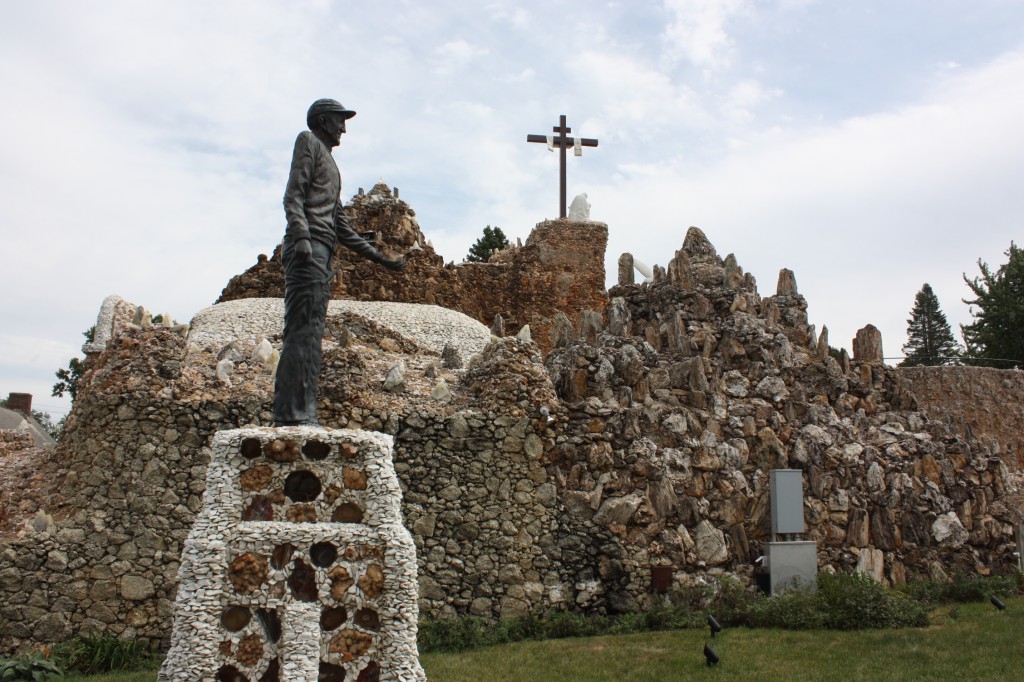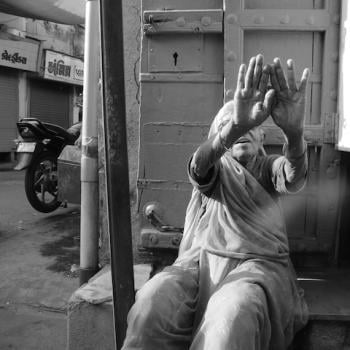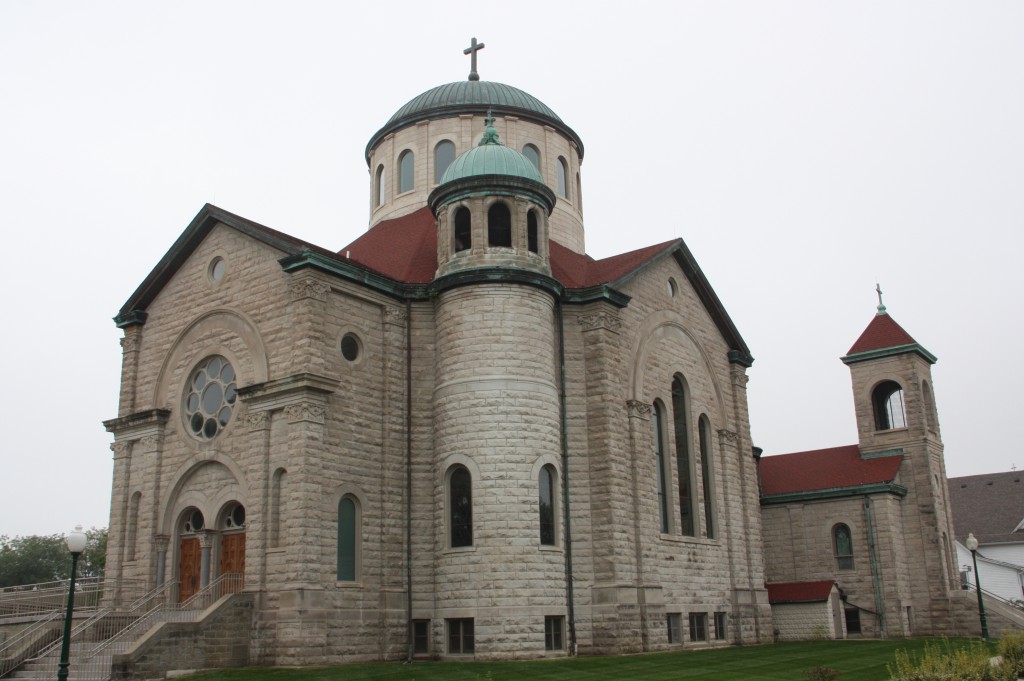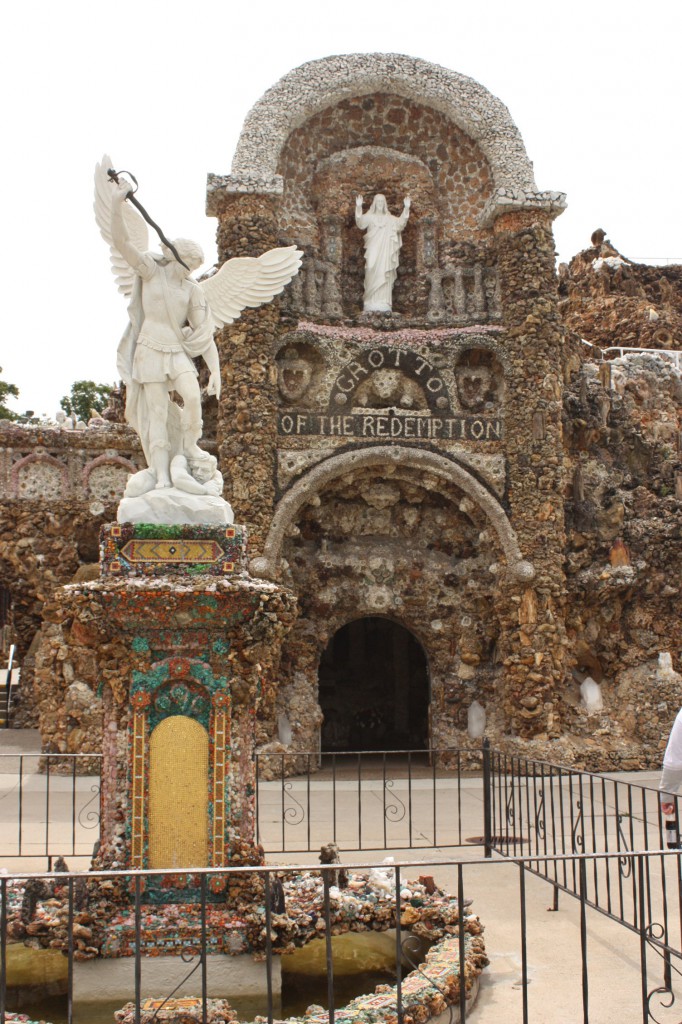
Not long ago, Holy Rover readers had a lively discussion about the various items they’ve purchased on their travels. I thought of those stories recently when I visited the Grotto of the Redemption in West Bend, Iowa. The grotto shows what can happen when someone’s collection of souvenirs gets put on steroids.
The grotto is the life work of Father Paul Dobberstein (1872-1954), a Roman Catholic priest who served Sts. Peter and Paul Church in this small town in north central Iowa. Like many of us with a spiritual bent, he collected rocks and stones on his travels. In 1912, he used his collection to start building a shrine that is now one of the largest grottos in the world (the folks in West Bend call it the world’s largest grotto, but I’m going to hedge my bets a little on this).
What is a grotto, you ask? A grotto is a natural or artificial cave, one that is often associated with religious devotion. Grotto comes from the Italian word grotta, which is related to our word grotesque. In the 15th century, Romans discovered a series of underground rooms dating back to the reign of the Emperor Nero. The rooms were filled with elaborate designs and decorations, creating an otherworldly ambiance that they called grottesche and that has come down to us as grotesque.
So there’s one of the ironies of history for you: the Emperor Nero is partly responsible for our fascination with grottos. You can find them all around the world at holy sites, ranging from famous ones like Lourdes to the bathtub-turned-upside down that shelters the Virgin Mary in countless yards.
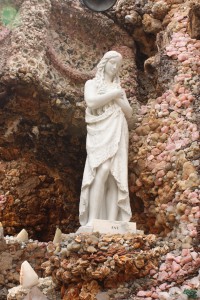
Which brings me back to the Grotto of the Redemption in West Bend. It’s huge. In fact, it’s actually nine separate grottos, each depicting a scene from Jesus’ life. Here you can see Adam and Eve being driven out Eden, St. Michael crushing the devil, Jesus preaching the Sermon on the Mount, Judas sneaking out of the Garden of Gethsemane, and the Holy Family in the stable in Bethlehem. While its statues are made of beautiful materials like Carrara marble, I must say I found them of uneven quality (though I did like the Eve at right, who clearly regrets eating the apple). But the semi-precious stones embedded in the grotto walls are amazing: rose quartz, polished agates, crystals, jasper, malachite, and petrified wood, even stalagmites taken from Carlsbad Canyons before it became a National Park. And in the nearby Sts. Peter and Paul Church is a Christmas Chapel with a Brazilian amethyst that weighs more than 300 pounds.
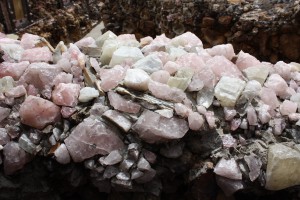
Father Dobberstein labored for 42 years to build the immense structure, which covers one city block. Matt Szerensce, a parishioner, and Father Louis Greving, Dobberstein’s successor, continued to work on the grotto after his passing. On the side of the landmark, fittingly, is a charming statue of Father Dobberstein holding a rock.
So what does one make of such an extravaganza of piety in the middle of the Iowa prairie? There’s something profoundly un-Midwestern about it all, certainly. Growing up Lutheran, I remember that such displays were seen as incontrovertible evidence of the sheer weirdness of Catholicism. We Iowans generally like our religious devotion to be smaller and more tasteful.
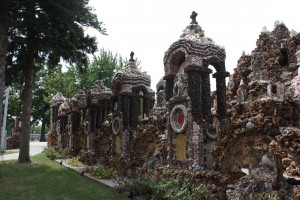
It probably won’t surprise you, however, to learn that I liked the over-the-top exuberance of the Grotto of the Redemption, its twisting stairways, odd angles, and angels looking down on you from around every corner. It doesn’t work for everyone as a place of devotion, but clearly it speaks to many people. There’s a steady stream of pilgrims to the grotto, even though most probably have to drive a long ways out of their way to get there.
Part of what I like is the sheer whimsy of it all. You’re an ordinary person in the middle of Iowa and you start collecting rocks and eventually you end up with this massive, ornate, ornamented thing that isn’t quite a church and isn’t quite a holy site (nothing like a martyrdom ever happened here, for example). But in the end it becomes a place where the spirit shines through, if you let it.
Think of that the next time you pick up a rock to take home on one of your trips. Be careful–you never know where such habits will lead you.
